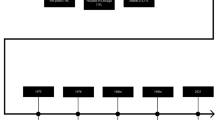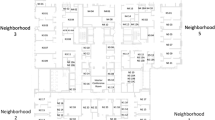Abstract
The 6th edition of the Recommended Standards for Newborn Intensive Care Unit (NICU) Design includes, for the first time, concerns related to sustainability. Environmental responsibility in healthcare had its beginnings in the late-1980s with an awareness of the toxic qualities of mercury and the need to remove it from hospital environments. Since that time, environmental activism in healthcare has grown to include efforts to construct ‘green’ buildings, incorporate sustainable practice and apply environmentally responsible purchasing. Language inserted into Standards 8 and 18–21 is intended to extend sustainable design and practice not only in the design of space in the NICU but also in the selection of materials such as floor surfaces, wall coverings, furnishings and ceiling finishes. This paper includes a number of resources that will not only assist with application of the standards, but also with expanding knowledge of issues related to the development of healthcare settings that are not harmful to either human or environmental health.
This is a preview of subscription content, access via your institution
Access options
Subscribe to this journal
Receive 12 print issues and online access
$259.00 per year
only $21.58 per issue
Buy this article
- Purchase on Springer Link
- Instant access to full article PDF
Prices may be subject to local taxes which are calculated during checkout
Similar content being viewed by others
References
McDonough W, Braungart M . Cradle to cradle: remaking the way we make things. North Point Press: New York, 2002.
McDonough W . Teaching design that goes from cradle to cradle. Chronicle of Higher Education [serial online]. 2004 Available at: http://chronicle.com/weekly/v50/i46/46b00601.htmAccessed 30 July 2004.
Solomon NB . Environmentally-friendly building strategies slowly make their way into medical facilities: new guidelines highlight the relationship between sustainable design and human health Architectural Record; August 2004; 179–188.
Bonda P . Putting the healthy back into healthcare Green @ work; January/February 2004; 16–23.
Ackerman F, Massey R . The economics of phasing out PVC Report presented to the Global Development and Environment Institute 2003; 1–57 Available at: http://www.noharm.org/details.cfm?type=document&id=880Accessed 29 September 2005.
Swan SH, Main KM, Liu F et al. Environmental levels of phthalates adversely affect male reproductive development in humans, study finds. Environmental Health Perspectives 2005 Available at: http://www.ehp.niehs.nih.gov/press/052405.htmlAccessed 6 July 2005.
Green guide for health care. Best practices for creating high performance healing environments Version 2.1 Pilot 2005 Available at: http://www.gghc.orgAccessed 27 May 2006.
Author information
Authors and Affiliations
Corresponding author
Rights and permissions
About this article
Cite this article
Marshall-Baker, A. Human and environmental health: sustainable design for the NICU. J Perinatol 26 (Suppl 3), S31–S33 (2006). https://doi.org/10.1038/sj.jp.7211592
Published:
Issue Date:
DOI: https://doi.org/10.1038/sj.jp.7211592
Keywords
This article is cited by
-
The business case for building better neonatal intensive care units
Journal of Perinatology (2014)
-
The design of neonatal incubators: a systems-oriented, human-centered approach
Journal of Perinatology (2013)
-
Flooring choices for newborn ICUs
Journal of Perinatology (2007)



